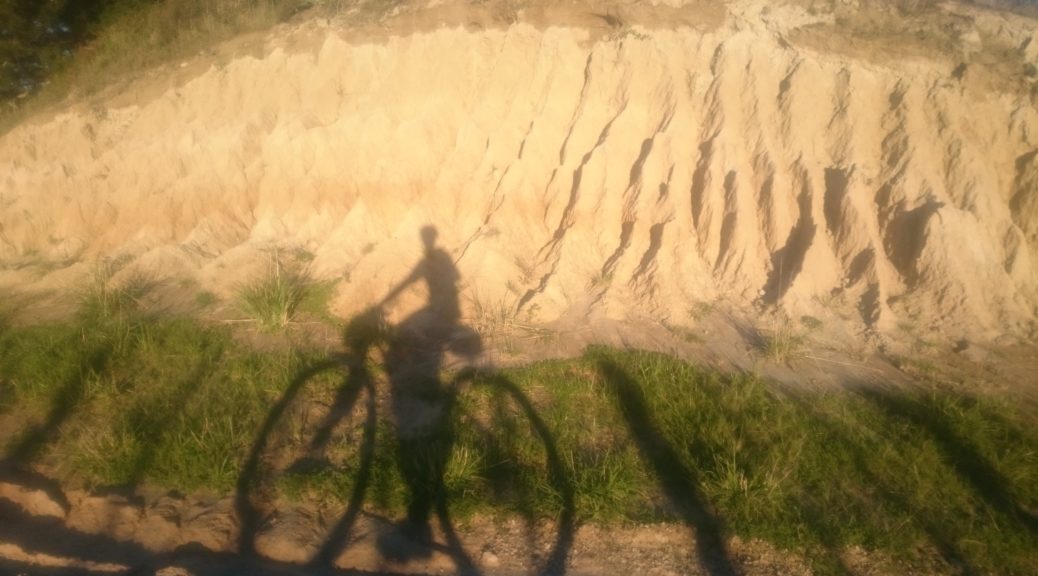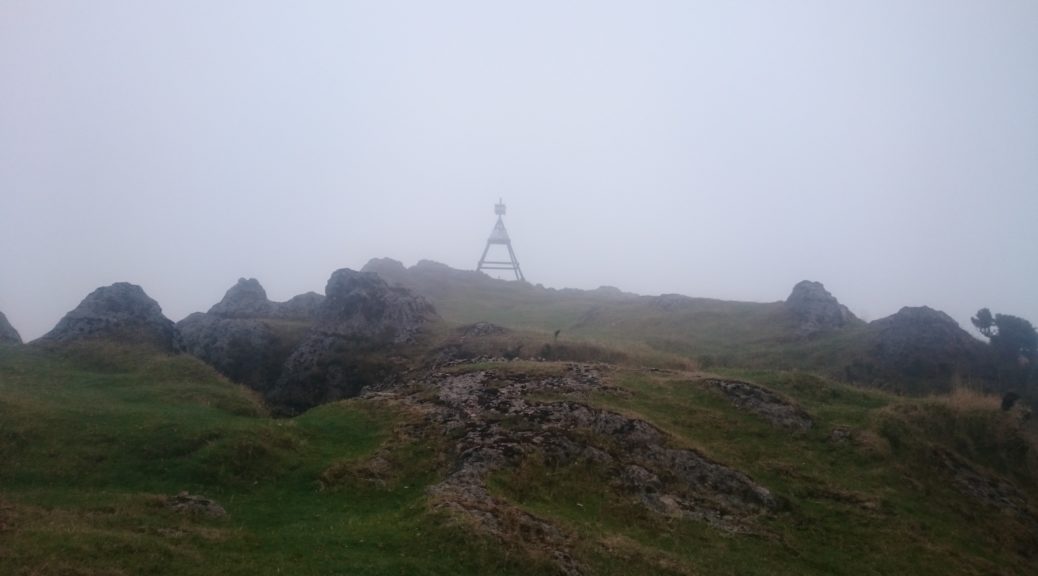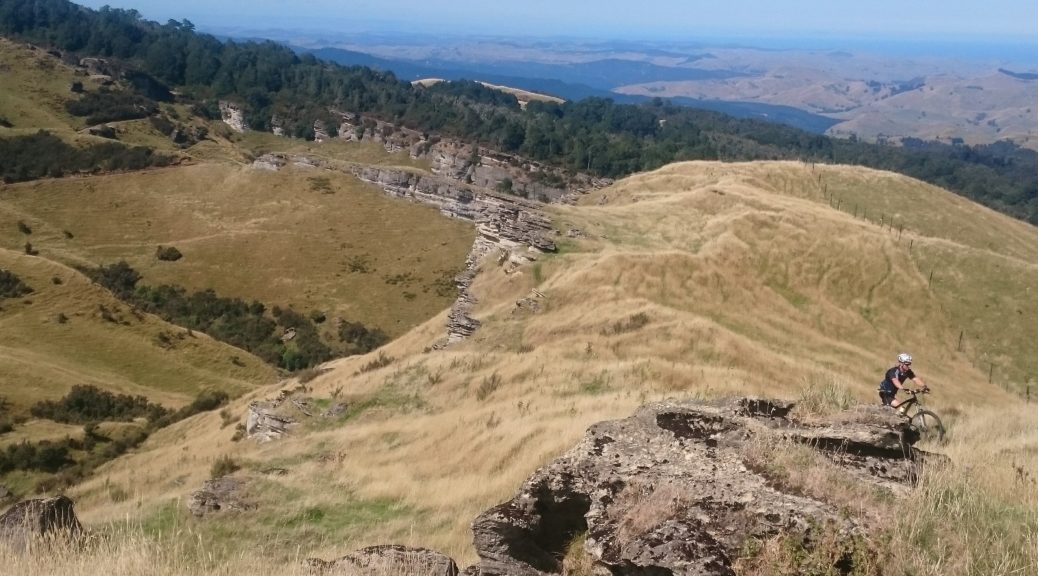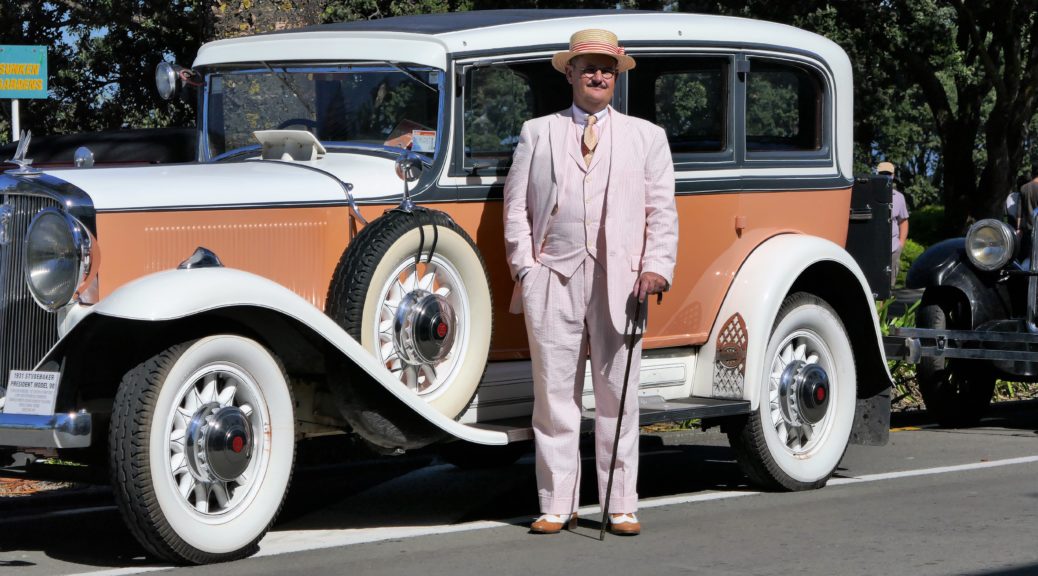Over my two summers so far living in Napier, I’d not quite made it to Waipataki Beach and its camping ground. Recently bought by the local councils to ensure that it was kept open for locals, I decided it must be worth a visit. The original plan was to load up my bike and ride that bike to work one Friday morning and then after work ride to Waipataki – I figured this would be easily achievable before dark in the summer. However, that never quite worked out and the Friday after work plan was discarded when daylight savings ended.
With a brilliant autumn weekend forecast, I readied myself and shortly after lunch on Saturday set off on a little adventure to explore somewhere new. In actuality not much of the route was new – I avoided the highway as much as possible and took the long route up Waipunga Rd. Waipunga Rd being a favourite route of mine when I was trying to get at least a little ready for Tour Aotearoa.
 Leaving the Hill behind, over Westshore Bridge I followed my commute route for ten or so kilometres.
Leaving the Hill behind, over Westshore Bridge I followed my commute route for ten or so kilometres.
 What’s this? Offshore power boat racing. That’s different. Not to mention loud, fast and repetitive.
What’s this? Offshore power boat racing. That’s different. Not to mention loud, fast and repetitive.
 I was heading for the coast in the far distance, just right of centre in this shot.
I was heading for the coast in the far distance, just right of centre in this shot.
 The crossing of the Esk is at the start of Waipunga Rd, before the hills start. It’s looking a bit lower than a couple of weeks previous, when we had 200 mm of rain in less than forty-eight hours at work (process water at work is taken from the Esk).
The crossing of the Esk is at the start of Waipunga Rd, before the hills start. It’s looking a bit lower than a couple of weeks previous, when we had 200 mm of rain in less than forty-eight hours at work (process water at work is taken from the Esk).
 In the mid-afternoon sun (warming enough to only need arm warmers in addition to shirt), the climbing began – as did the views of rolling green hills and distant ranges.
In the mid-afternoon sun (warming enough to only need arm warmers in addition to shirt), the climbing began – as did the views of rolling green hills and distant ranges.
 The largest part of the climb ascends this ridge from right to left, steadily gaining about three hundred metres. It’s very nice.
The largest part of the climb ascends this ridge from right to left, steadily gaining about three hundred metres. It’s very nice.
 I really enjoyed the gradual climb – stopping often to snap photos to share.
I really enjoyed the gradual climb – stopping often to snap photos to share.


On top of the ridge, the road surface changes to gravel while the climbing slackens off markedly. With no traffic, the warming sun and the changing views it was blissful.
 Eventually, the road starts to roll up and down a bit more – gradually climbing overall.
Eventually, the road starts to roll up and down a bit more – gradually climbing overall.
 I paused at the end of Waipunga Rd to look north – this was as far north as my route would go, and also the highest altitude. I had five hundred metres to lose in the twenty kilometres to the coast.
I paused at the end of Waipunga Rd to look north – this was as far north as my route would go, and also the highest altitude. I had five hundred metres to lose in the twenty kilometres to the coast.
 I turned right onto Kaiwaka Rd – more lush gravel! I headed for the highway to cross it.
I turned right onto Kaiwaka Rd – more lush gravel! I headed for the highway to cross it.
 The sun sunk further, setting nicely on this rather out of place patch of toetoe.
The sun sunk further, setting nicely on this rather out of place patch of toetoe.
 More hills – thankfully I didn’t have to ride them all.
More hills – thankfully I didn’t have to ride them all.
 I kept a watchful eye on my shadow as I lost altitude quickly.
I kept a watchful eye on my shadow as I lost altitude quickly.
 It seems one can’t really escape work – the pulpmill steaming away on the right; Napier easily visible stretching left across the water, the hills south of Havelock North in the distance.
It seems one can’t really escape work – the pulpmill steaming away on the right; Napier easily visible stretching left across the water, the hills south of Havelock North in the distance.
 I said my goodbyes to cell coverage with one big downhill, a few hairpins and cool rushing air as I blasted down to Waipataki and the sea.
I said my goodbyes to cell coverage with one big downhill, a few hairpins and cool rushing air as I blasted down to Waipataki and the sea.
That was a great little ride (three hours, a shade under sixty kilometres) in the hills to get to a new spot. Checking in and setting up my little tent, it was time for a wander down to the beach in the last of the light.
 First I had to work out how to cross the stream.
First I had to work out how to cross the stream.
 Big stepping stones helped, I didn’t fall in; just.
Big stepping stones helped, I didn’t fall in; just.
I gazed off over the Pacific (which I can easily do a few hundred metres from home admittedly, but it’s different when there’s no one else around, no houses, no city…) and wondered what might be over there – more new places to explore one day, no doubt.
Darkness overtaking the campground, I cooked my modest dinner, and gratefully accepted three large lamb chops from a couple that had brought too much food; funny, I never have that problem. I found a book and settled down in the warm of the lounge to read for a while before retiring to my tent. Thinking over the afternoon I fell into an excellent night’s sleep.
Up before dawn, I strolled down to the beach in the cool of the morning, found a better place to cross the stream and waited for the sun to rise.



Having cooked and eaten my porridge, I waited a little for the first of the sun’s rays to rise over the cliffs and dry my tent some. I was happy to do so as I still had a book to read.
 It quickly became apparent that it was to be another stunning autumn day.
It quickly became apparent that it was to be another stunning autumn day.
All packed up and ready to ride, I resolved that I must plan a two-night stay sometime so as to explore the many walks and some biking possibilities.
 Pedaling up the driveway, the day’s only sizable hill rose in front of me.
Pedaling up the driveway, the day’s only sizable hill rose in front of me.
It was easily conquered and I was soon on the highway and on the short route home.
 The highway gets rather close to the coast and the puffing pulpmill comes back into view.
The highway gets rather close to the coast and the puffing pulpmill comes back into view.
 And just like that I was nearly home, back on my commute route.
And just like that I was nearly home, back on my commute route.
A fantastic little ride from home with plenty of wonderful distractions and more discoveries for me.


 Definitely getting closer to the clouds as we reached the summit of the road. This looks north, we turned south onto a paper road and kept climbing.
Definitely getting closer to the clouds as we reached the summit of the road. This looks north, we turned south onto a paper road and kept climbing. This view would normally look out over the Pacific in the distance. Not today. We turned onto the next paper road near that small solar panel on a pole.
This view would normally look out over the Pacific in the distance. Not today. We turned onto the next paper road near that small solar panel on a pole. We stood around and pondered for a while as to which way to go. I apparently took to riding wearing only one glove a fair bit.
We stood around and pondered for a while as to which way to go. I apparently took to riding wearing only one glove a fair bit. We were getting into the clouds further and further. Route finding became challenging, but it was decided our path continued to climb (not the track you can just see in the picture, we went up further into the clouds).
We were getting into the clouds further and further. Route finding became challenging, but it was decided our path continued to climb (not the track you can just see in the picture, we went up further into the clouds). Just as well it was worth it all for the views.
Just as well it was worth it all for the views. We saw hints of the ridge and the bluffs.
We saw hints of the ridge and the bluffs. Here we pass our first fallen tree….
Here we pass our first fallen tree…. Still we climbed through the murk; this road is definitely only on paper.
Still we climbed through the murk; this road is definitely only on paper. Shaun finds the route.
Shaun finds the route. Ignoring the peril, I’m still managing to lift my bike here.
Ignoring the peril, I’m still managing to lift my bike here. That’s a lot closer than it was!
That’s a lot closer than it was! The transmitter tower, looking rather spooky in all that cloud.
The transmitter tower, looking rather spooky in all that cloud. Our only mechanical of the trip – not entirely helpful, but it was quickly repaired!
Our only mechanical of the trip – not entirely helpful, but it was quickly repaired! Out of the clouds. Just.
Out of the clouds. Just. Which meant we had to push up that hill in the centre of the picture, just to the right of the pines. That was after avoiding a large bull that had quite a stare on it.
Which meant we had to push up that hill in the centre of the picture, just to the right of the pines. That was after avoiding a large bull that had quite a stare on it. I pottered over a stream on the farm before making it not very far up the hill – there was a lot of pushing to the top of that ridge.
I pottered over a stream on the farm before making it not very far up the hill – there was a lot of pushing to the top of that ridge. Only a couple of twenty metre cliffs between where we stood and the field on the other side – where we wanted to go.
Only a couple of twenty metre cliffs between where we stood and the field on the other side – where we wanted to go. The Mangaone River was quite nice; a packraft would have been nicer.
The Mangaone River was quite nice; a packraft would have been nicer.

 It was bumpy. Only a few sleepers were missing.
It was bumpy. Only a few sleepers were missing.


 There may have been a bit of drop beside the entrance to the tunnel.
There may have been a bit of drop beside the entrance to the tunnel.
 We walked the length of the curved tunnel, not stumbling over any dead goats in the complete darkness.
We walked the length of the curved tunnel, not stumbling over any dead goats in the complete darkness.

 Nearing the top, we stopped at this gateway. Since seeing this picture, I’m disturbed by how skinny my calves look. I’m sure there is some muscle there somewhere.
Nearing the top, we stopped at this gateway. Since seeing this picture, I’m disturbed by how skinny my calves look. I’m sure there is some muscle there somewhere. Looking out towards the Pacific.
Looking out towards the Pacific. Well, I clambered – Mark and Shaun took their bikes up too.
Well, I clambered – Mark and Shaun took their bikes up too. Pleased to have finished a great day’s ride. Especially as this was the longest ride on a MTB for both Shaun (left) and Mark (right) – well done guys.
Pleased to have finished a great day’s ride. Especially as this was the longest ride on a MTB for both Shaun (left) and Mark (right) – well done guys. A few of our little group went off hunting; I was more intent on making camp, eating copious amounts of carbonara, wandering down to the river, and getting an early night after a great day.
A few of our little group went off hunting; I was more intent on making camp, eating copious amounts of carbonara, wandering down to the river, and getting an early night after a great day.
 Most of the public events centre around Marine Parade and the sound shell – opposite the wonderful Masonic, where many gathered.
Most of the public events centre around Marine Parade and the sound shell – opposite the wonderful Masonic, where many gathered. Cars weren’t the only historic vehicles out and about.
Cars weren’t the only historic vehicles out and about. Saturday afternoon’s vintage car parade was well attended by umbrellas. The Bentley club was in town from all over, impressive.
Saturday afternoon’s vintage car parade was well attended by umbrellas. The Bentley club was in town from all over, impressive. Beautiful cars, and many of them – those in open-topped ones looked decidedly damp.
Beautiful cars, and many of them – those in open-topped ones looked decidedly damp. There was plenty of opportunity to admire the vehicles afterwards.
There was plenty of opportunity to admire the vehicles afterwards. This number plate caught my eye.
This number plate caught my eye. A few of the cars were originally from Napier.
A few of the cars were originally from Napier.
 Bikes even got a look in.
Bikes even got a look in. More Bentleys.
More Bentleys.

 OK, there may have been more looking at cars.
OK, there may have been more looking at cars.
 I bumped into many people from work over the weekend – this time an American visitor, Jody, who I managed to get this photo (and the better ones in this post) from.
I bumped into many people from work over the weekend – this time an American visitor, Jody, who I managed to get this photo (and the better ones in this post) from.



 Yes, more cars – particularly struck by the body work on this one.
Yes, more cars – particularly struck by the body work on this one.
 This was probably the oldest car around.
This was probably the oldest car around.
 I did manage to get another photo of myself from an obliging passerby.
I did manage to get another photo of myself from an obliging passerby. The Gatsby Picnic got moved off the soggy lawn it is always on, most picnicers went down the main street of town – this couple set up near Tom Parker Fountain and seemed to spend more time posing for photos than eating.
The Gatsby Picnic got moved off the soggy lawn it is always on, most picnicers went down the main street of town – this couple set up near Tom Parker Fountain and seemed to spend more time posing for photos than eating.